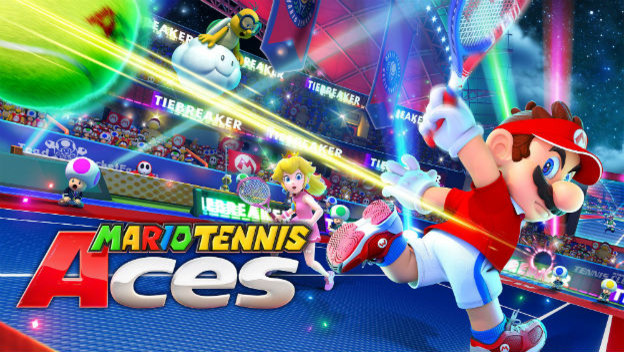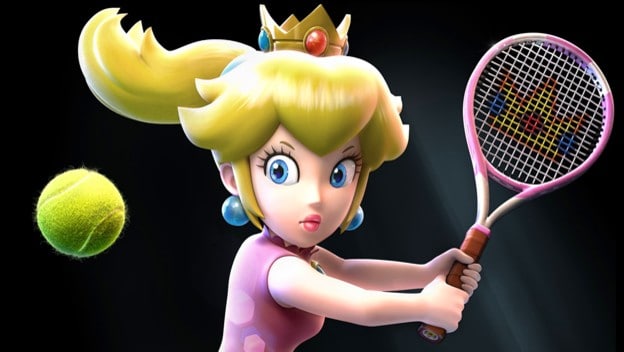Mario has historically worn a lot of hats over the years ( Odyssey pun unintended). But few ventures have been as accepted and celebrated as his tennis career. The Mario Tennis series has serious clout with Nintendo games, due to not only developer Camelot’s brilliant, accessible adaptation of the sport itself, but also the depth of play outside of “just” playing tennis added throughout series history. The story isn’t all happy, however, as the series seemed to barely survive the Wii U/3DS generation. With the announcement of Mario Tennis Aces for the Switch, the vibe from the community is one of guarded hope. There’s a lot to prove with this game, and there’s a reason for that. Let’s get into why Mario Tennis is so special, and why the series is in the situation it’s in now.
The story of Mario Tennis starts with… Sega? That’s right. You may be familiar with a little thing called the Shining series, particularly the original Shining in the Darkness , and the follow-up series Shining Force . These classic Sega Genesis RPGs were where Camelot got its start, before the team was even called Camelot. Things with Sega would eventually break down, and the company would end up at Nintendo making… sports games. All that JRPG juice wouldn’t go to waste, however, as Camelot started things off with Mario Golf on the Nintendo 64, and Mario Tennis . These games were significant not just because of their great mechanics (and the birth of Waluigi in Mario Tennis ), but also because of their handheld counterparts on the Game Boy Color.
Mario Golf and Mario Tennis on the Game Boy Color are known as all-time Nintendo classics, thanks to their RPG-like story modes. Players would be able to control their chosen character, navigate around in the game’s world, talk to other characters, and even level up through their respective sports journey. Instead of just playing golf or tennis, there were almost Pokemon -like structures of story progression through winning tournaments, going up through the ranks, and eventually facing off against the high level Mario characters. This concept of blending sports and RPG would continue to the Game Boy Advance, while Camelot made an even bigger name for itself with the Golden Sun series. Meanwhile, the company almost made console versions for the Gamecube that, while sans RPG, were fully-featured with tons of different modes of play, unlockables, and more. Unfortunately, this would be the end of those halcyon days of handheld sports RPG.
Camelot straight up sat the following generation out almost entirely. On the Wii, Camelot made a forgotten golf game that was published by Capcom, and a “New Play Control” port of Power Tennis was published by Nintendo. Eventually, a third game in the Golden Sun series would appear on the DS, but it didn’t light the world on fire the way Camelot’s GBA library did. It took a long time to make, seemed to take up most of the company’s time and resources, but ultimately felt dated and unsure of itself. This would translate to the return to Mario Tennis and Golf .
On the 3DS, we would see both Mario Tennis Open and Mario Golf: World Tour . These would be met with lukewarm reception from all but the most devoted of players, with World Tour eking out a slightly better reputation. These games were free of RPG elements, with some fun extra modes but nothing as expansive as the previous handheld versions. It seemed like while technology improved, Camelot struggled to keep up, and that would eventually lead to disaster on the Wii U. Mario Tennis: Ultra Smash appeared on the console to little more than confusion and disappointment from fans and critics alike. The game had nearly no content aside from basic tennis matches, and a cast of characters that had little difference from each other. Camelot’s reputation was in tatters, and Mario Sports Superstars on the 3DS did little to gain any attention, much less make things better.

So when Mario Tennis Aces appeared on a post-Switch Nintendo Direct, the reactions were all over the place. People truly want a new Mario Tennis , but they want a good one, one that brings the series back to the days of legend, when even a golf game could be a compelling-multi hour experience. But Camelot seemed lost, and so were fans of the Mario Sports brand. So of course, in a moment in time when Nintendo is hotter than ever, the phrase “story mode” was heavily leaned on in the announcement. Mario Tennis Aces looks like a return to the content-heavy days, with multiple match times, bonus gimmicks, structured progression and more. As time went on, we learned more about extra mechanics and alternative ways to play. Mario Tennis Aces looks packed!
It still remains to be seen if Mario Tennis Aces is a true return to form for both the Mario Sports series and Camelot itself. As we should know by now, applying rockstar status to a developer by name doesn’t always go well. Time is linear, and people move on to other things. The team at Camelot could be very different today than it was in the good ol’ days. Or, perhaps transitioning to the more demanding HD era was a challenging adjustment for a relatively smaller developer. We may never know, but the proof will be in the pudding with Mario Tennis Aces . Luckily we’ll be getting a taste of it soon with an online demo, and a soon to follow release in June 2018. Personally I’m excited, but in an unfortunately guarded manner of speaking.
